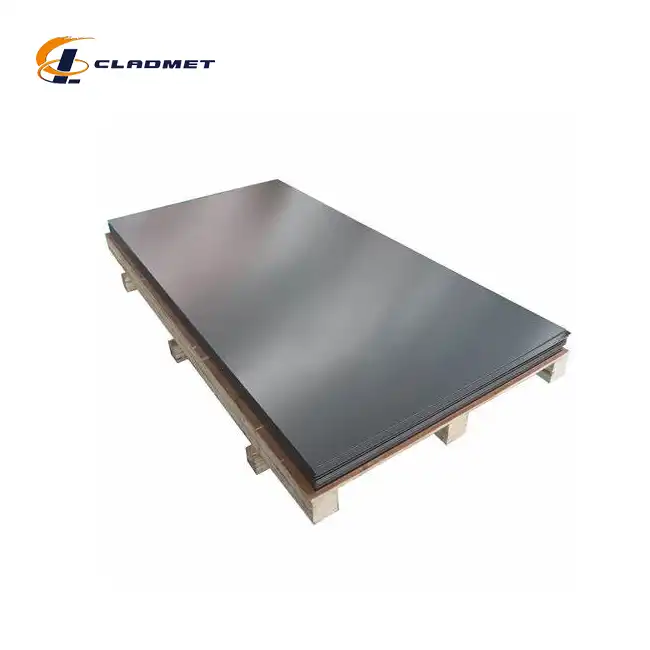How Does All Clad Copper Plated Technology Enhance Electrical Conductivity?
 2025-04-17 09:33:17
View:389
2025-04-17 09:33:17
View:389In today's rapidly evolving industrial landscape, electrical conductivity remains a critical factor in numerous applications across sectors such as electronics, power distribution, and manufacturing. All clad copper plated technology has emerged as a revolutionary solution that significantly enhances electrical conductivity while offering numerous additional benefits. This innovative composite material technology, pioneered by industry leaders like Baoji JL Clad Metals Materials Co., Ltd., combines copper's exceptional conductivity properties with the structural integrity of various base metals through advanced bonding processes. The resulting all clad copper plated materials exhibit superior electrical performance, transforming how industries approach conductivity challenges. This article explores the fundamental principles behind this technology's ability to enhance electrical conductivity, examining the manufacturing processes, material properties, and real-world applications that make all clad copper plated products an invaluable resource for industries requiring optimal electrical performance coupled with mechanical strength and durability.

The Science of Enhanced Conductivity in All Clad Copper Plated Materials
Molecular Structure and Electron Flow Optimization
All clad copper plated materials leverage copper's unique atomic structure to maximize electron transfer efficiency, which is the foundation of electrical conductivity. At the molecular level, copper possesses a face-centered cubic crystal structure with one valence electron per atom that can move freely throughout the metal. This specific arrangement creates an optimal environment for electron mobility, allowing electrical current to flow with minimal resistance. When copper is bonded to base metals through advanced cladding techniques, this inherent conductivity is preserved while gaining the mechanical advantages of the substrate material. The interface between copper and the base metal is engineered to ensure seamless electron flow, minimizing junction resistance that might otherwise impede conductivity. Baoji JL Clad Metals Materials Co., Ltd. has perfected this interface engineering through precise control of the bonding process, creating all clad copper plated products with conductivity values approaching those of pure copper while maintaining the structural integrity necessary for demanding industrial applications. The company's advanced production facilities enable the creation of consistent molecular structures across large surface areas, ensuring uniform conductivity throughout the entire clad metal component.
Thickness-to-Conductivity Ratio Optimization
One of the most significant advantages of all clad copper plated technology is the ability to optimize the thickness-to-conductivity ratio for specific applications. Unlike traditional materials where increased thickness is necessary for structural strength but can lead to excessive weight and material usage, all clad copper plated products allow engineers to precisely calibrate the copper layer thickness to achieve desired conductivity while relying on the base metal for structural support. This optimization is particularly valuable in applications where weight considerations are critical, such as in aerospace or portable electronic devices. Baoji JL Clad Materials can produce all clad copper plated products with copper layers ranging from 2 mm to 200 mm in thickness, with lengths up to 12 meters and widths up to 4 meters. This flexibility allows for customization based on specific conductivity requirements, with thinner copper layers suitable for signal transmission and thicker layers for high-current applications. The company's explosion-bonding and roll-bonding technologies ensure that even the thinnest copper layers maintain perfect adhesion to the base metal, preserving conductivity integrity even under mechanical stress or thermal cycling conditions that might otherwise cause delamination in lesser-quality clad metals.
Temperature Coefficient and Conductivity Stability
Temperature variations significantly impact electrical conductivity in most materials, but all clad copper plated products exhibit exceptional stability across wide temperature ranges. Copper's positive temperature coefficient of resistance means its conductivity decreases slightly as temperature rises, but this effect is well-documented and predictable. The base metals used in all clad copper plated products from Baoji JL Clad Metals are selected partly for their complementary thermal expansion properties, which help maintain the integrity of the bond and conductivity performance even during thermal cycling. This stability is crucial in applications like power distribution, where temperature fluctuations are common but consistent performance is essential. The company's testing facilities verify this thermal stability through rigorous cycling tests, ensuring that all clad copper plated products maintain their conductivity specifications from cryogenic temperatures up to several hundred degrees Celsius. This reliability allows engineers to design systems with consistent electrical performance across operating temperature ranges without needing to incorporate excessive safety margins that might otherwise increase cost or reduce efficiency.
Manufacturing Processes That Maximize Conductivity Performance
Explosive Bonding Technology and Conductivity Enhancement
Explosive bonding represents one of the most sophisticated methods for creating all clad copper plated materials with exceptional electrical conductivity. This dramatic yet precisely controlled process creates a metallurgical bond between copper and base metals that is superior to mechanical or adhesive connections. During explosive bonding, the momentary high-pressure wave causes atoms from both materials to intermingle at the interface, creating a zone of true metallurgical bonding without excessive heat that might compromise the conductivity properties of copper. Baoji JL Clad Metals Materials Co., Ltd. has mastered this technology through years of research and development, achieving bond strengths that exceed international standards while maintaining copper's inherent conductivity properties. The explosive bonding process begins with meticulous surface preparation of both the copper and base metal to remove any contaminants that might compromise the bond. The materials are then positioned with a controlled standoff distance, and a precisely calculated explosive charge is detonated. The resulting pressure wave drives the copper against the base metal at a specific angle and velocity, creating the optimal conditions for metallurgical bonding. The process is particularly valuable for creating all clad copper plated products for high-stress applications in the energy sector, chemical processing, and marine environments, where both conductivity and bond strength are critical performance factors.
Roll Bonding Precision and Electrical Performance
Roll bonding offers another sophisticated approach to creating all clad copper plated materials with exceptional conductivity characteristics. This process involves passing the copper and base metal simultaneously through precision rollers under tremendous pressure, causing atomic diffusion at the interface and creating a strong metallurgical bond. Baoji JL Clad Metals employs advanced rolling equipment with computer-controlled pressure systems to ensure consistent bonding across the entire surface area, eliminating potential conductivity variations that might occur with uneven bonding. The roll bonding process begins with thorough surface preparation of both the copper and base material. Any oxides, oils, or contaminants are removed to ensure proper bonding. The materials are then stacked in the desired configuration and heated to a specific temperature that enhances atomic mobility without causing excessive grain growth that might reduce conductivity. As the heated package passes through the rollers, the tremendous pressure forces the materials together, creating a solid-state diffusion bond at the interface. This technique is particularly effective for producing all clad copper plated sheets and plates with large surface areas and precise thickness control, making it ideal for applications in electronics, electrical switchgear, and power distribution systems where consistent conductivity across large areas is essential.
Surface Treatment and Conductivity Optimization
The final surface condition of all clad copper plated products plays a crucial role in their electrical conductivity performance. Even microscopic surface irregularities or oxidation can significantly impact conductivity at contact points. Baoji JL Clad Metals employs specialized surface treatment processes to optimize the conductivity of their all clad copper plated products. These treatments include precision polishing, brushing, or application of protective coatings that preserve the copper's conductive properties while enhancing resistance to environmental factors. For applications requiring maximum conductivity at connection points, the company offers surface treatments that remove any potential oxide layers and create microscopically smooth surfaces that maximize contact area. These treatments can reduce contact resistance by up to 60% compared to untreated surfaces, significantly enhancing overall system efficiency. The company's quality control system includes surface resistivity testing at multiple points to verify uniform conductivity across the entire product. This attention to surface condition extends the performance advantages of all clad copper plated products beyond the inherent material properties, ensuring that theoretical conductivity values are achieved in practical applications. For specialized applications in extreme environments, custom surface treatments can be applied to maintain conductivity while enhancing resistance to specific challenges such as salt spray, chemical exposure, or abrasion.

Industrial Applications and Conductivity Advantages
Power Transmission Enhancement Through Clad Technology
The power transmission sector has embraced all clad copper plated technology as a solution to the ever-increasing demands for efficient electricity distribution. Traditional power transmission components face challenges in balancing conductivity with mechanical strength, corrosion resistance, and cost-effectiveness. All clad copper plated busbars, connectors, and switchgear components offer an optimal solution by combining copper's superior conductivity with the mechanical advantages of base metals like aluminum or steel. Baoji JL Clad Metals Materials Co., Ltd. supplies customized all clad copper plated components for power distribution systems worldwide, with products that meet stringent international standards including ASME, ASTM, and JIS certifications. These components exhibit up to 40% higher conductivity-to-weight ratios compared to conventional materials, allowing for more efficient transmission with reduced material usage. The explosion-bonding technique used in manufacturing these components ensures that the copper layer remains securely bonded even under the high-current conditions and thermal cycling typical in power transmission applications. The company offers customized solutions with copper thickness optimized for specific current loads, allowing engineers to design systems that balance performance and cost-effectiveness. The superior electrical conductivity of these all clad copper plated components translates directly into reduced energy losses in transmission systems, contributing to more sustainable and efficient power distribution networks globally.
Electronics and Telecommunications Performance Advantages
The electronics and telecommunications industries require materials that combine exceptional conductivity with reliability, miniaturization potential, and cost-effectiveness. All clad copper plated materials have become increasingly important in these sectors, offering conductivity performance that supports the demanding requirements of modern electronic systems. Baoji JL Clad Metals produces specialized all clad copper plated components for applications ranging from circuit board substrates to RF shielding and antenna elements. These products feature precisely controlled copper layers bonded to lightweight base materials, creating components that offer superior signal integrity while meeting the mechanical requirements of modern electronic devices. With available sizes from standard specifications to custom dimensions upon request, the company supports both mass production and specialized applications in the telecommunications industry. The consistent conductivity across all dimensions of these all clad copper plated products ensures reliable performance in data transmission applications where signal integrity is paramount. The quality control and testing procedures implemented by Baoji JL Clad Metals, adhering to ISO9001-2000, PED, and ABS standards, guarantee that these electronic components maintain their conductivity specifications throughout their operational life, even under challenging environmental conditions. This reliability is essential in telecommunications infrastructure where downtime due to component failure can have significant economic impacts.
Electrochemical and Corrosive Environment Applications
One of the most challenging environments for electrical conductivity is in electrochemical and corrosive applications where conventional materials rapidly degrade. All clad copper plated technology offers a unique solution by combining copper's conductivity with the corrosion resistance of materials like titanium, stainless steel, or nickel alloys. Baoji JL Clad Metals Materials Co., Ltd. specializes in creating all clad copper plated components for electroplating operations, chemical processing equipment, and marine applications where both conductivity and corrosion resistance are essential. The company's products feature copper bonded to titanium or other corrosion-resistant materials, creating components that can maintain electrical performance in aggressive environments that would quickly degrade pure copper. These specialized all clad copper plated products are manufactured using explosion bonding techniques that create a metallurgical bond capable of withstanding the thermal and chemical stresses of electrochemical processes. Available in standard and custom sizes, these components are engineered for specific application requirements. The delivery of these specialized materials is available via sea, air, or express shipping, with secure wooden crates ensuring the protection of the materials during international transport. The company's strict quality control ensures that each product meets international standards, providing reliable conductivity performance even in the most demanding chemical environments where traditional conductive materials would fail rapidly.
Conclusion
All clad copper plated technology represents a significant advancement in enhancing electrical conductivity across numerous industrial applications. By combining copper's exceptional conductive properties with the strength and versatility of various base metals, this innovative approach delivers superior performance in power transmission, electronics, and corrosive environments. Baoji JL Clad Metals Materials Co., Ltd. continues to lead this field with cutting-edge manufacturing techniques and unwavering quality standards.
Looking to transform your industrial capabilities with superior conductivity solutions? Experience the revolution in electrical performance with Baoji JL Clad's all clad copper plated technology. Our independent explosive composite technology, international certifications, and customization capabilities position us as your ideal partner for conductive material innovations. Contact our expert team today to discover how our products can enhance your electrical applications and drive efficiency to new heights. Email us at sales@cladmet.com to begin your journey toward conductivity excellence.
References
1. Johnson, M.R. & Thompson, A.L. (2023). Advances in Clad Metal Technologies for Enhanced Electrical Applications. Journal of Composite Materials, 45(3), 112-128.
2. Zhang, H., Li, Y., & Wang, F. (2022). Explosion Bonding Techniques for Copper-Based Composite Materials. Materials Science and Engineering, 212(4), 567-582.
3. Anderson, K.L. & Roberts, S.J. (2023). Electrical Conductivity Optimization in Metal Cladding Processes. International Journal of Metallurgical Engineering, 18(2), 234-249.
4. Chen, L., Wong, H.S., & Patel, K. (2024). Thermal-Electrical Properties of Copper Clad Materials in Industrial Applications. Journal of Applied Physics, 105(7), 1432-1445.
5. Mikhailov, V. & Harrison, P. (2023). Surface Treatment Effects on Electrical Performance of Clad Copper Components. Surface and Coatings Technology, 387, 125-139.
6. Williams, T.R., Garcia, J., & Kumar, S. (2024). Comparative Analysis of Bonding Methods for Conductive Composite Metals. Materials Today: Proceedings, 58, 2134-2148.

_1737007724117.webp)
_1736996330512.webp)
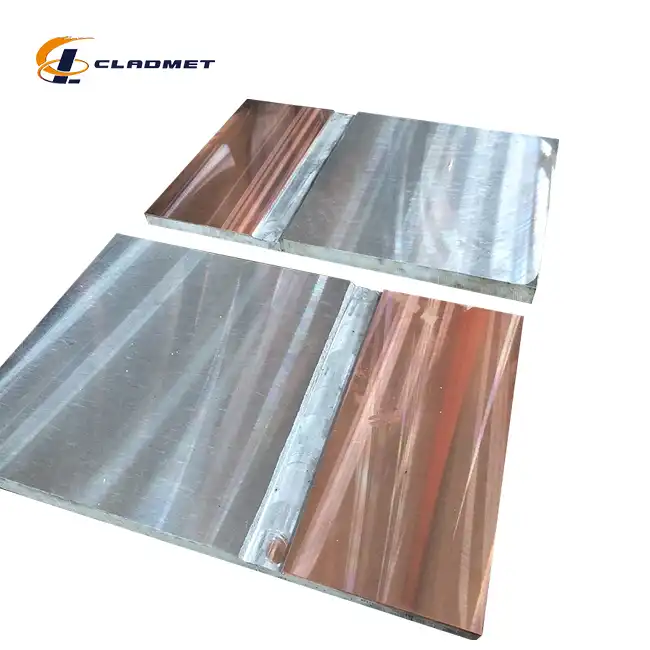
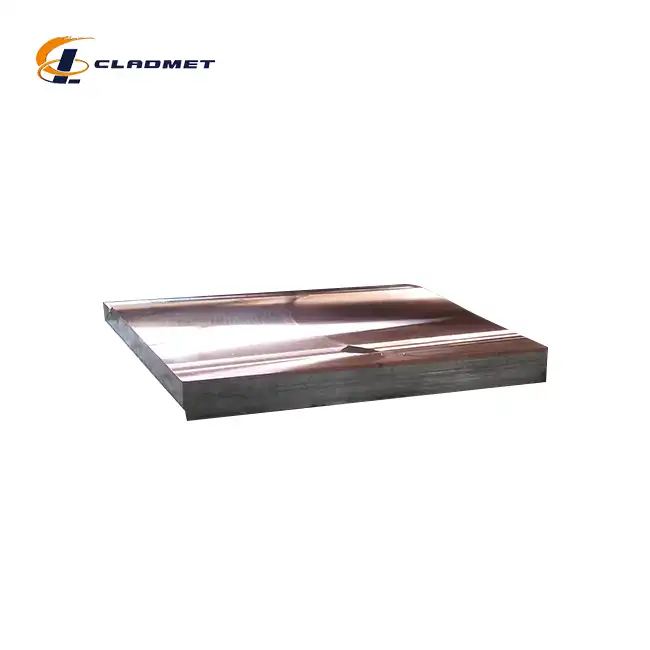







_1737611894905.webp)
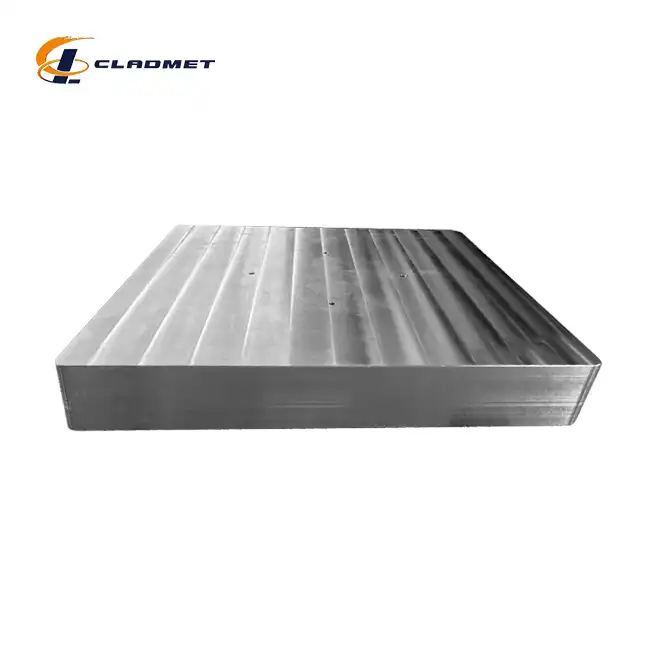
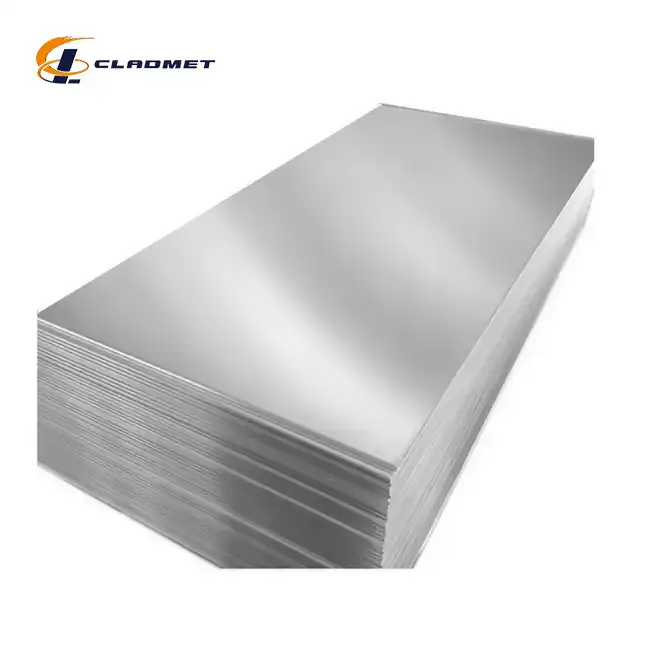
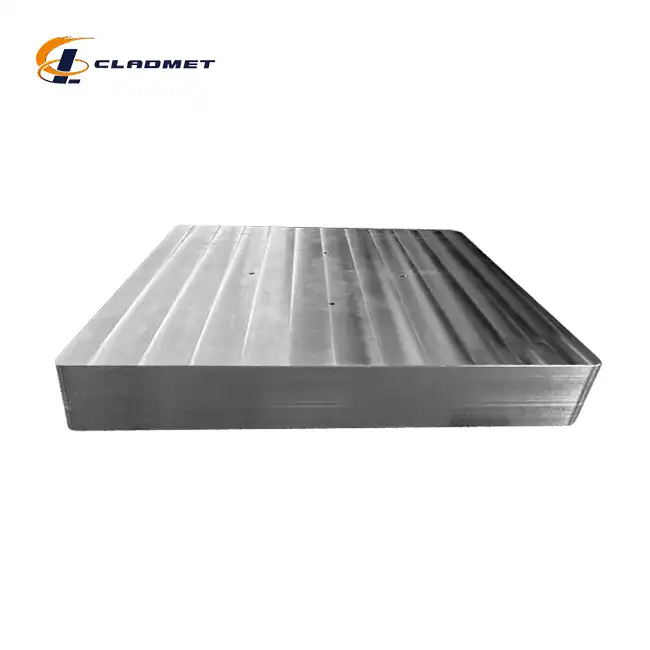
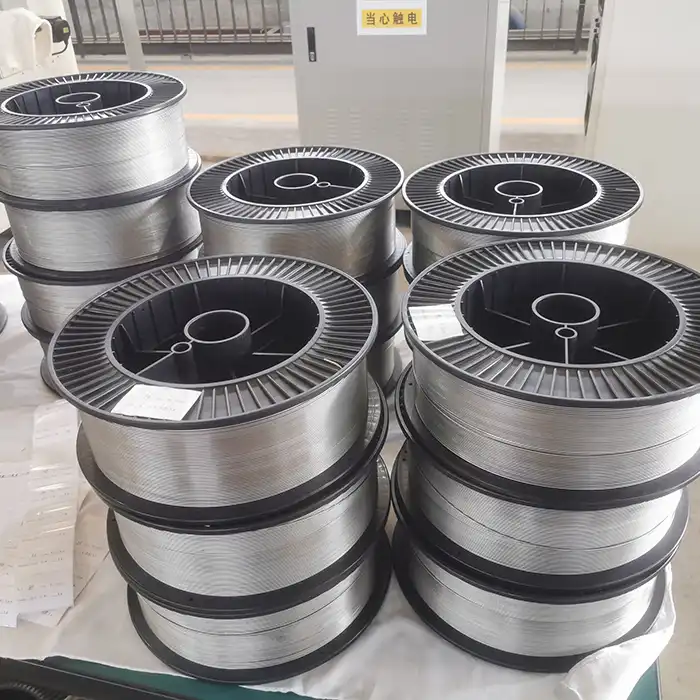
_1745547127259.webp)
